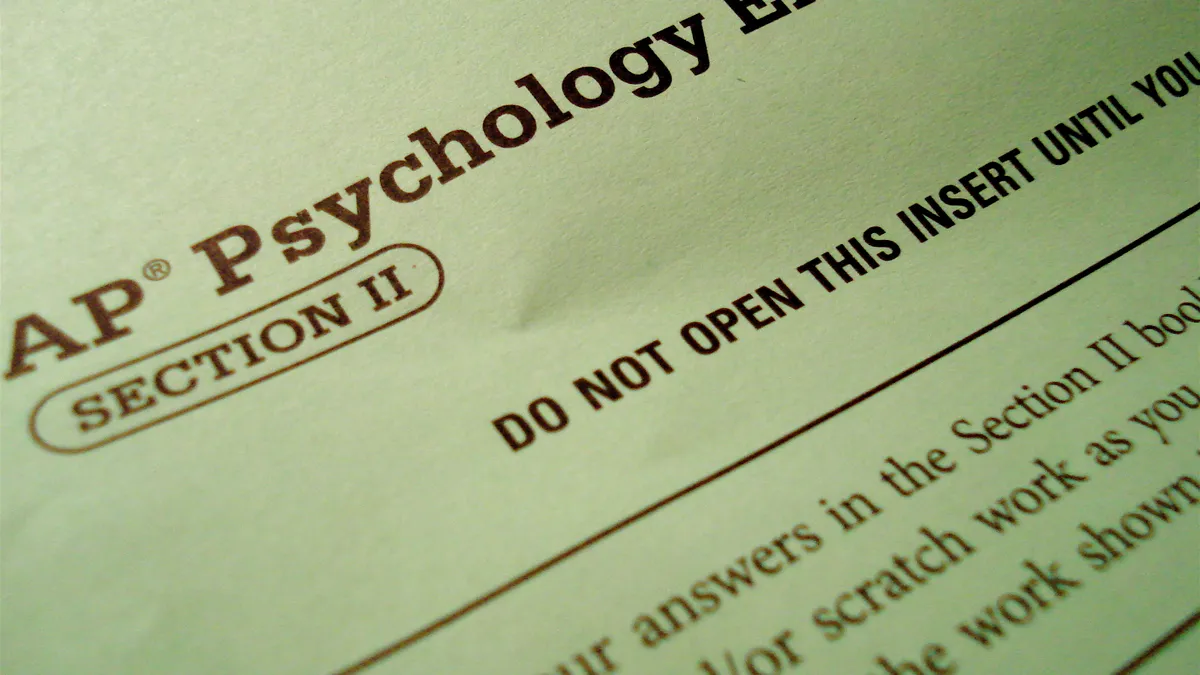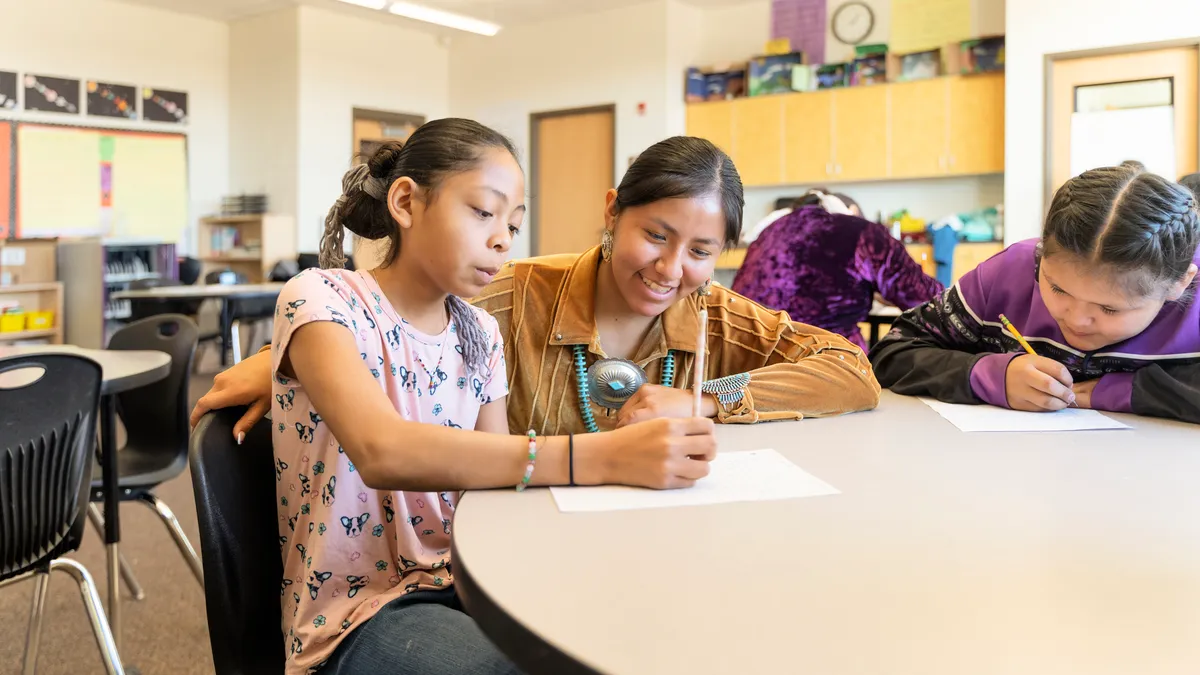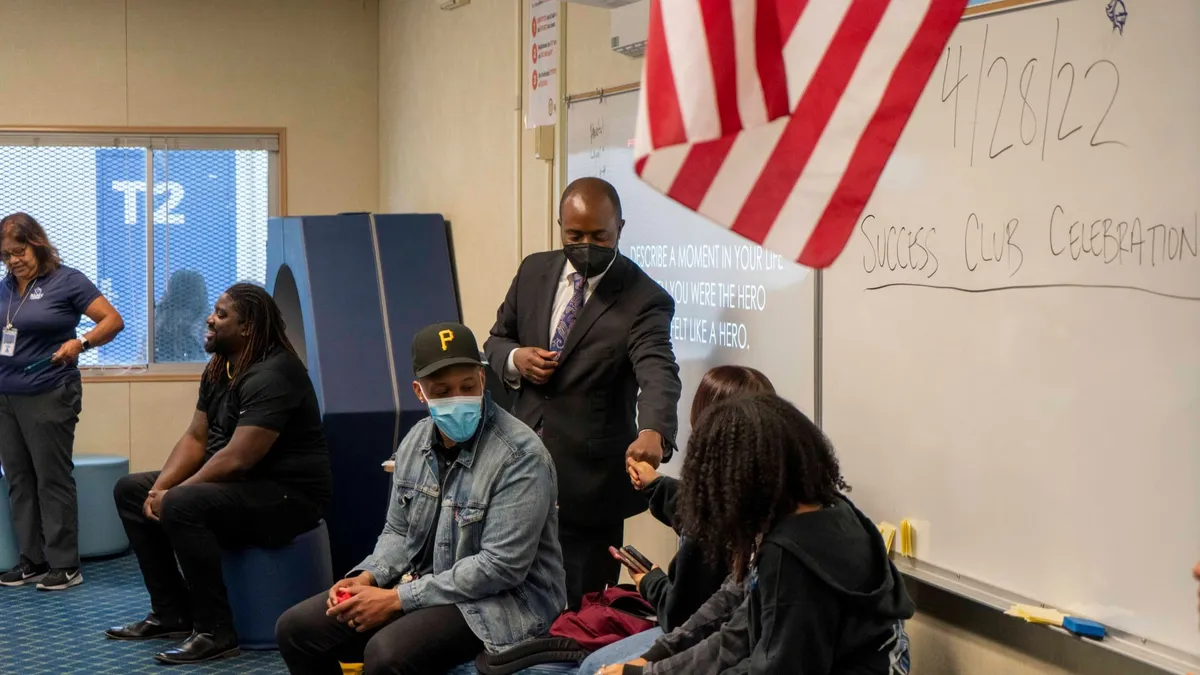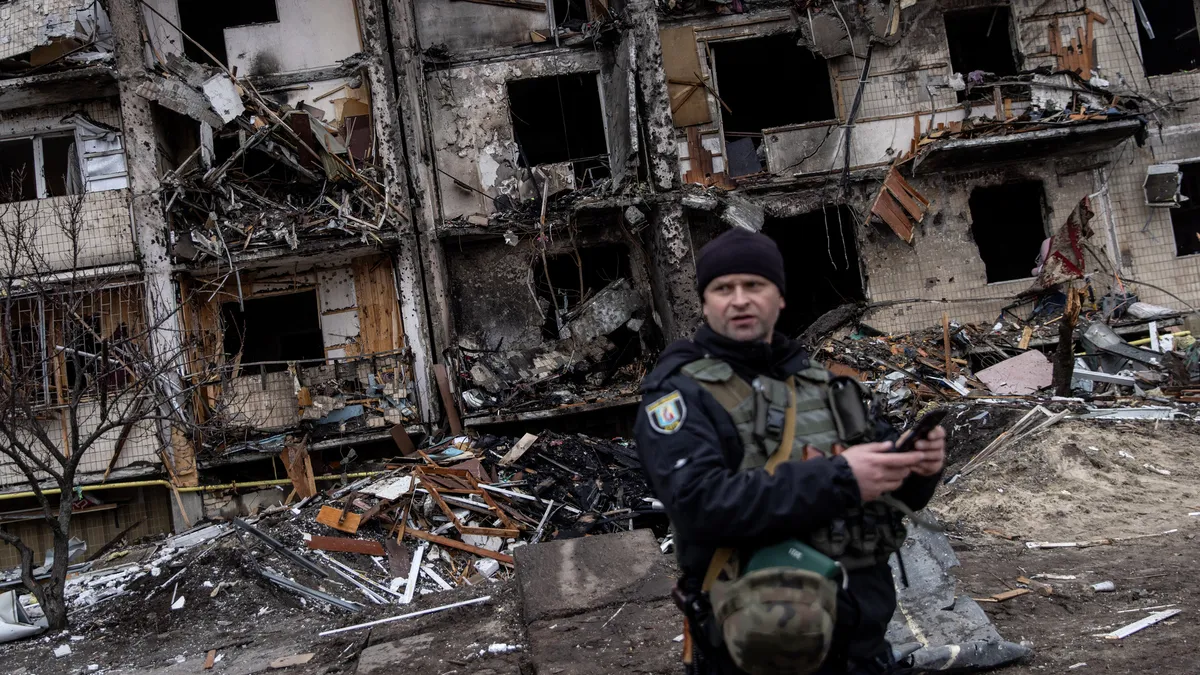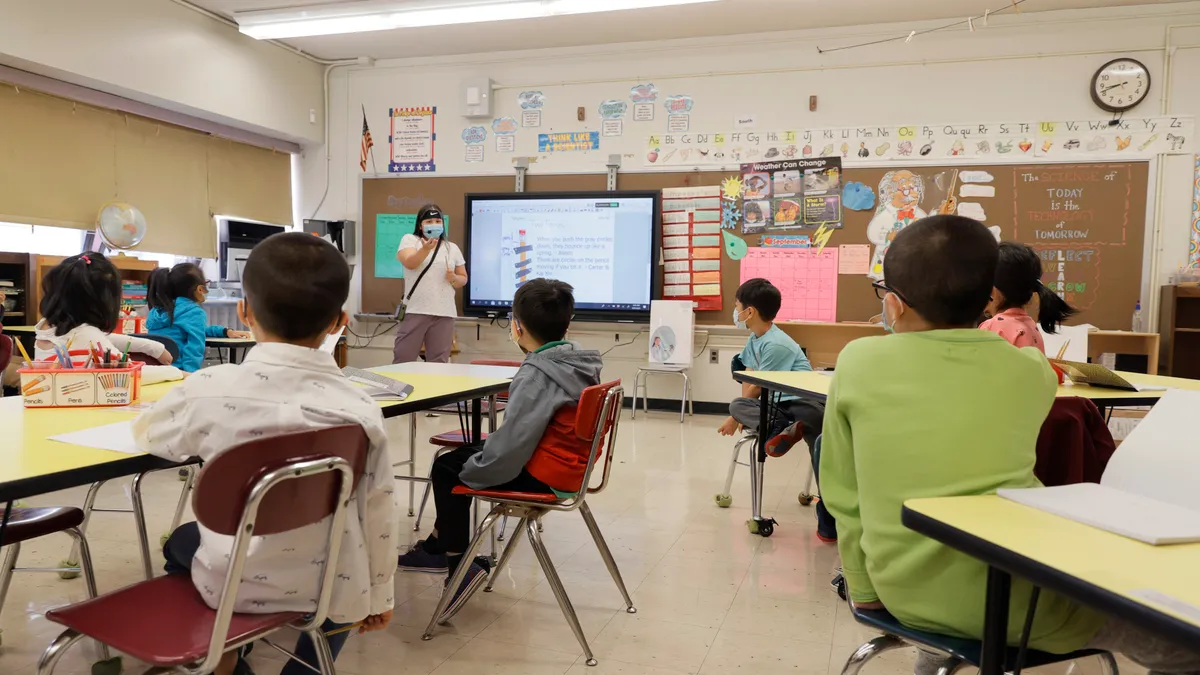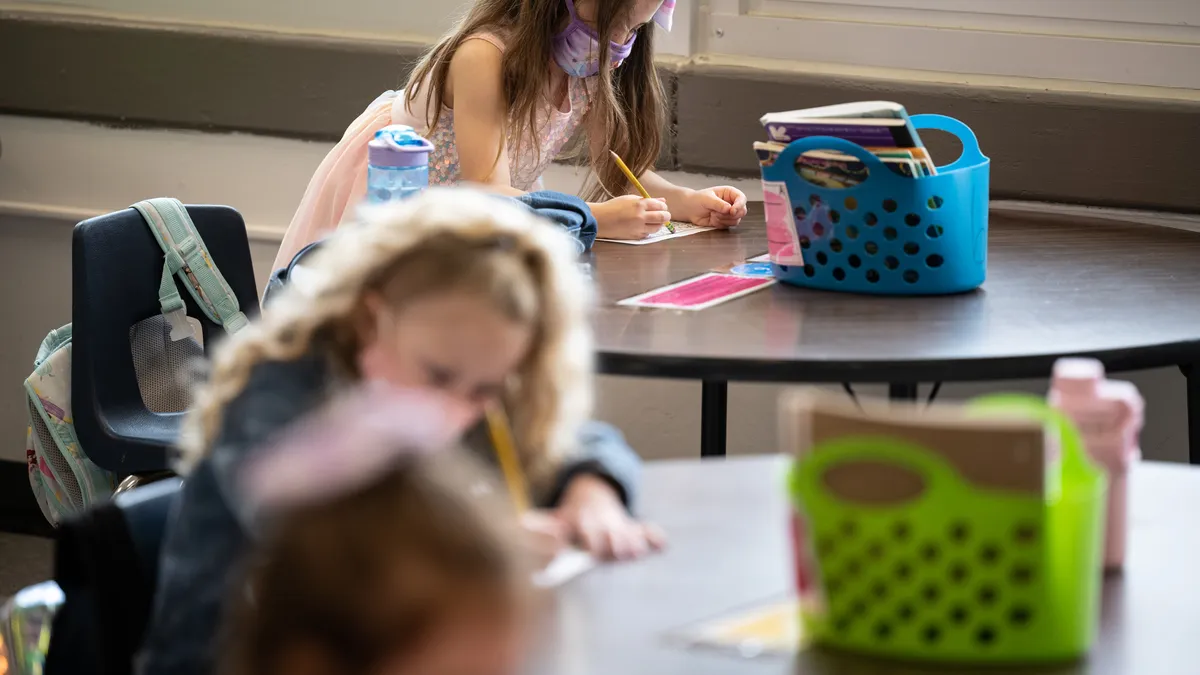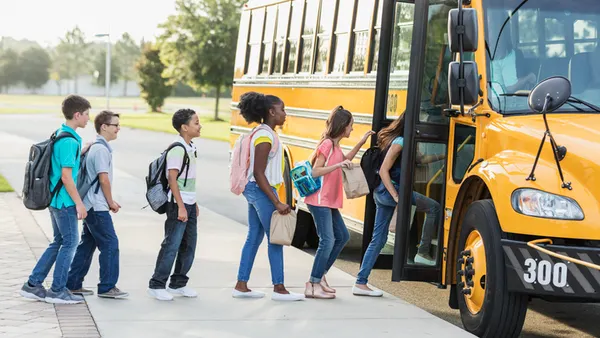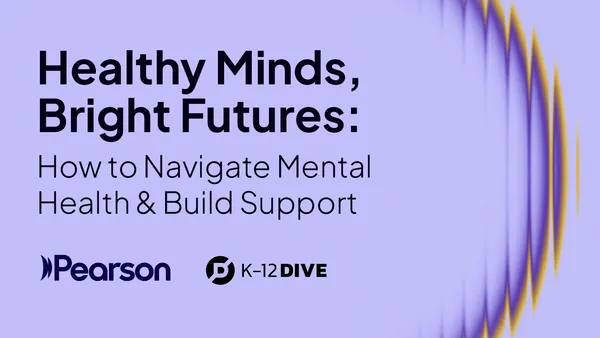Coaching teachers on classroom management and culturally responsive strategies can result in fewer racial disparities in discipline, according to a study appearing in a special issue of School Psychology Review.
Led by Catherine Bradshaw of the University of Virginia (UVA), the random controlled trial, involving 158 elementary and middle school teachers in a Maryland school district, compared those who received the coaching to those who did not. The coached teachers were less likely to refer black students to the office for discipline reasons and were observed to have classrooms with more student cooperation.
Called Double Check, the coaching model is designed to be part of School-Wide Positive Behavioral Interventions and Supports (SW-PBIS) — a widely used approach to improving school climate. The coaches, who didn’t work at the schools and had an advanced degree in either education or school psychology, used a process called Classroom Check-Up, which takes teachers through problem-solving strategies.
While teachers also receive professional development on culturally responsive practices and use the PBIS framework — which sets behavior expectations for all students — the researchers found that it was the individual coaching that led to fewer disparities.
“This pattern of findings is consistent with prior research, which suggests that professional development provided in a workshop format may improve knowledge, attitudes, and beliefs but is less effective at improving teacher and student behaviors,” they write.
The study, “Promoting Cultural Responsivity and Student Engagement Through Double Check Coaching of Classroom Teachers: An Efficacy Study,” is one of five in the special issue that aims to bring more awareness to efforts to reduce racial disparities in the numbers of students being suspended, expelled or becoming involved with law enforcement.
'Nudging the gap'
The topic is one of several the Federal Commission on School Safety is considering. Advocates for black and Hispanic students are also closely watching whether U.S. Secretary Betsy DeVos will rescind Obama-era guidance stating that the departments of Education and Justice will investigate such disparities under Title VI of the Civil Rights Act.
A report released in April, drawn from the Civil Rights Data Collection for the 2015-16 school year, showed that while suspensions have dropped by 100,000 students since the previous collection in 2013-14, the gap between black and white students being suspended has remained almost the same. Also in April, The Civil Rights Project at the University of California Los Angeles and Harvard University law professors released a report showing that black students with disabilities miss significantly more instructional time due to suspension than their white peers.
The overall message from the papers included in the issue is that despite widespread attention to racial disparities in discipline outcomes, there is little research evidence pointing to solutions that educators can use to reduce these gaps.
“In reviewing this collection of articles, we conclude that the field has made some progress in nudging the gap rather than closing in on it,” Bradshaw and Jessika H. Bottiani, also of UVA, and Anne Gregory of Rutgers University in New Jersey, write in the introduction to the articles. “Nonetheless, we anticipate that this research will help advance the field and inform the next stage of rigorous empirical work on interventions related to equity, inclusion, and culturally responsive school environments.”
The federal commission, which will meet Tuesday in Lexington, Ky., for another three-part listening session, also heard a presentation on PBIS at a Maryland school in late May. But the study led by Bradshaw suggests that PBIS on its own is not enough to reduce disparities.
An “alternative to zero-tolerance” policies
A second study appearing in the same journal, led by Dewey Cornell of UVA, examines the results of a Virginia law requiring all public schools to have threat assessment teams. The teams, including those with expertise in counseling, instruction, school administration and law enforcement, investigate students’ threats of violence against others.
Examining threat assessments involving more than 1,800 students during the 2014-15 school year, the researchers found that the assessments did not focus on students of color more than white students.
Fifty-one percent of the students who were the subject of the threat assessments were white, 31% were black and 7% were Hispanic. Three-fourths of the students were male, and over a third received special education services. The analysis shows that there were no statistically significant differences by race in the percentages of students suspended, transferred to alternative education programs or who received "law enforcement actions." Students in special education, however, were still more likely than non-special education students to be suspended following a threat assessment.
The lack of racial disparities related to threat assessments, however, were not reflected in overall suspension data for the schools examined. Black students were still three times more likely and Hispanic students were 1.8 times more likely to be suspended than white students.
Describing threat assessment as a flexible “alternative to zero-tolerance discipline” policies, the authors write that the process can keep a student who brings a plastic knife to school in a lunch box or uses a finger to “shoot” a classmate, for example, from being suspended. Threat assessment teams “are taught to investigate the student’s behavior and to consider his or her motivations and intentions in making a threat,” they write, adding that school psychologists can help schools integrate threat assessment into their overall approaches to discipline and school safety.
Other papers in the issue focus on strategies for addressing implicit bias, the links between culturally responsive teaching and student behavior and the Denver Public Schools’ use of restorative practices. But Bradshaw, Bottiani and Gregory also write that many questions about disproportionality remain, such as whether student reports of teacher practices are valid and reliable.
'A matter of community'
Zakiya Sankara-Jabar, who spoke during the federal commission's first public listening session on June 6, said in her work as national field organizer with the Dignity in Schools Campaign, she has seen several strategies that reduce disparities in discipline.
These include "a combination of culturally relevant curriculum, anti-racism training, hiring more teachers of color and implementation of restorative practices with fidelity."
Cornelius Minor, a lead staff developer with the Reading and Writing Project at Teachers College in New York City, works with teachers — sometimes for several years — to improve instruction, including the use of more culturally relevant practices for interacting with students.
In an interview, he described a recent situation in which a teacher gave 19 6th graders detention for talking during a read-aloud. He explained that in Mexico, where many of the students are from, talking during a story is a cultural norm.
He also referred to a Brooklyn school where he has seen declines in office referrals and increases in students voluntarily asking to participate in peer mediation or receive tutoring.
"It's really not discipline; it's a matter of community," Minor said, adding that trying to "silence" students can lead to violence. It's important, he added, for teachers to ask questions and respond to students in a way that de-escalates feelings of anger or embarrassment in front of their peers.
"You don’t have to know everything about every culture on the planet; you just have to know how to ask the right questions," he said. "You want to create a community that everyone feels like they belong to."






